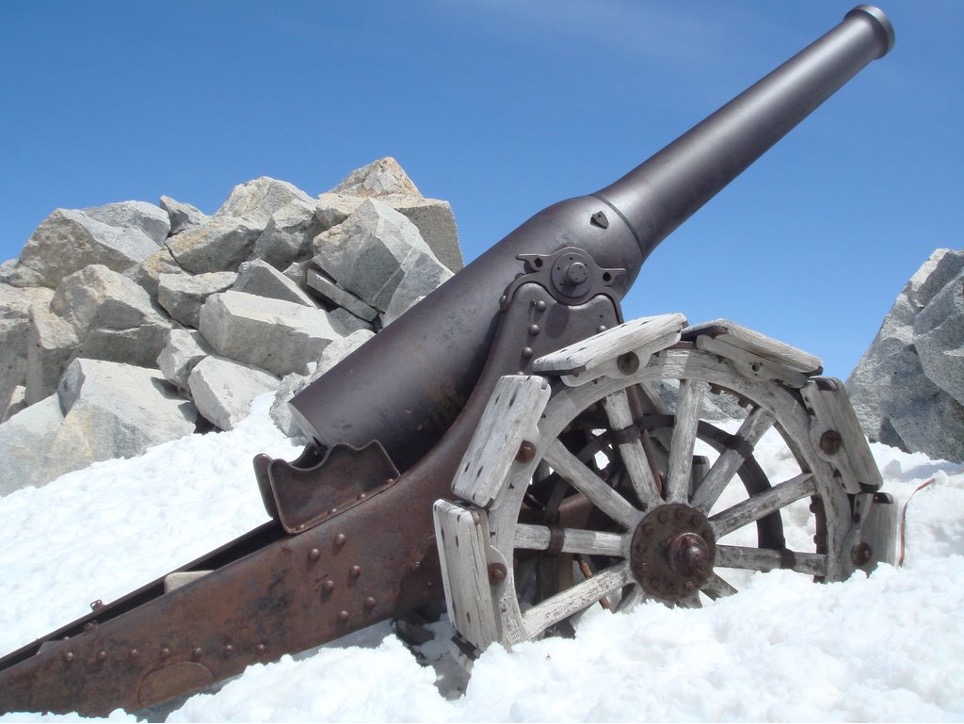A HIPPOPOTAMUS AT 3000 METERS
The transport of the 149G cannon

Many are the enterprises carried out by all the armies during the First World War, but one that will certainly remain in history is the transport of the 149G cannon to the top of the Cresta della Croce, at over 3000 meters. This cannon, where the G stands for the material with which it is made which is cast iron, had been nicknamed the hippopotamus due to its size and considerable weight: we are talking about approximately 6 tons!
Having a cannon of such dimensions and firepower, in a high mountain conflict, was vital for the Royal Army for two important reasons: first, it provided undisputed dominance during bombardments due to its range (almost 11 km) and destructive capacity; secondly, since no other firearms of such size were present at those altitudes that could have countered it. It is needless to emphasize how from the beginning the feat was considered practically impossible by many, too much weight to transport too high, but this was not enough to stop our soldiers who with the strength of their arms, and a few curses, managed in just 78 days to cover the 1500 meters of altitude that separated them from the Passo del Venerocolo (the original position designed for the cannon) reaching their destination on April 27, 1916. The cannon had then undergone another transfer to support the subsequent assault on Corno di Cavento, reaching the Cresta della Croce at 3276 meters, the place where it is still located.
Viazzi Luciano, “I diavoli dell’Adamello”, Ugo Mursia Editore, prima edizione 1981, edizione utilizzata: IV edizione 2019, Milano
Martinelli Vittorio, “Guerra alpina sull’Adamello vol.1 1915-1917”, Edizione Povinelli, 1996, Bolzano
Stefano Rossi – Studente Magistrale - Università Ca’ Foscari
2025-04-06
Salvatore Ciccarello
